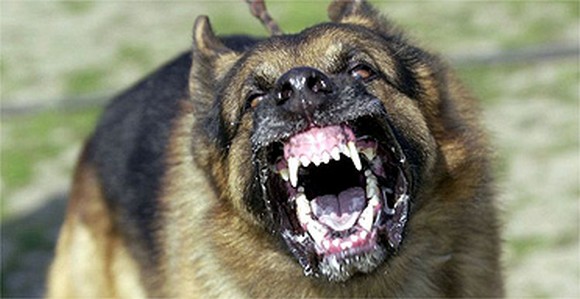I get many phone calls from people whose dogs have bitten someone. They are understandably nervous and afraid of either their dogs or of what will happen to their dogs through the legal system. In order for me to assist, it is important I understand as much about a dog’s motivation for biting as possible. This will allow me to know what behavior issue to address.
Dogs bit for various reasons. They either bite to calm or warn, or they bite due to aggressiveness (viciousness). Any bite can be painful, even if the nature or motivation is different.
The first thing I ask about a dog bite is “where”? Knowing where the dog bit gives me a good idea as to the motivation for the bite. If the dog bit in the back of a leg, for instance, then typically the dog bit from fear, and was trying to calm or warn. A dog bite on the hand can be calming, warning or even rough play (from a lack of self-control). Dog bites on arms or the front of legs are often times associated with aggressive bites. Aggressive bites are intended to cause harm, whereas calming bites are not. Often a vicious dog will hold and shake after making contact. Bites from fear are typically snaps that made contact with skin.
Second, I ask if the dog drew blood or if sutures were needed. Many injuries occur because humans instinctively pull away when bitten. This causes skin to tear more. I also need to know what the wound looks like. Were there puncture wounds without tearing? What direction do the tears go? A dog that bites from fear will often cause more bruising than blood. Aggressive bites will cause puncture wounds and lacerations that are typically severe enough to need medical attention. It is important to also take into consideration the size/power of the dog who bit. Wounds from a small dog’s bite will be much different than those from a large dog’s.
The last things I ask are what occurred right before the bite, how long did the bite incident last and what happened immediately after the bite. If an owner tells me that the dog was lunging and barking at the neighbor as the neighbor tried talking to him but then the neighbor turned to walk away just as the dog lunged and nipped his calf, then I know that it was probably a fearful bite and the dog was using a calming/warning bite. This is important to help the neighbor, and owner, understand that the dog is not an aggressive/vicious animal, but a fearful one. If a child was hugging on the dog just before the bite then I again know that the dog was probably using a calming/warning bite.
I’m not saying that biting in these situations is appropriate, however, you must understand that dogs have their own way of communicating when they are stressed (though sometimes inappropriately). Many humans do not recognize and/or respect a dog’s communication signals which forces the dog to exhibit scarier signs such as snapping and biting. As humans, it is our responsibility to understand our canine companions so we can respect those moments of stress and can avoid putting ourselves in situations that could cause us harm.
If your dog has ever bitten anyone, even if it wasn’t hard, you should reach out to a professional to ensure the dog is using his signals appropriately. The chances of your dog biting again are very high, especially if the behavior worked (e.g. the dog wanted a person out of his face and after the human got bitten he moved away from the dog). The good news is that a dog can learn that biting isn’t an appropriate response and can live safely and harmoniously with all humans. But training must take place.
If you’re unsure of how dogs use communication signals during stressful times, I encourage you to join us for one of our Dog Communication seminars or take the course online.
